Updated from original as of 26 MAR 2015
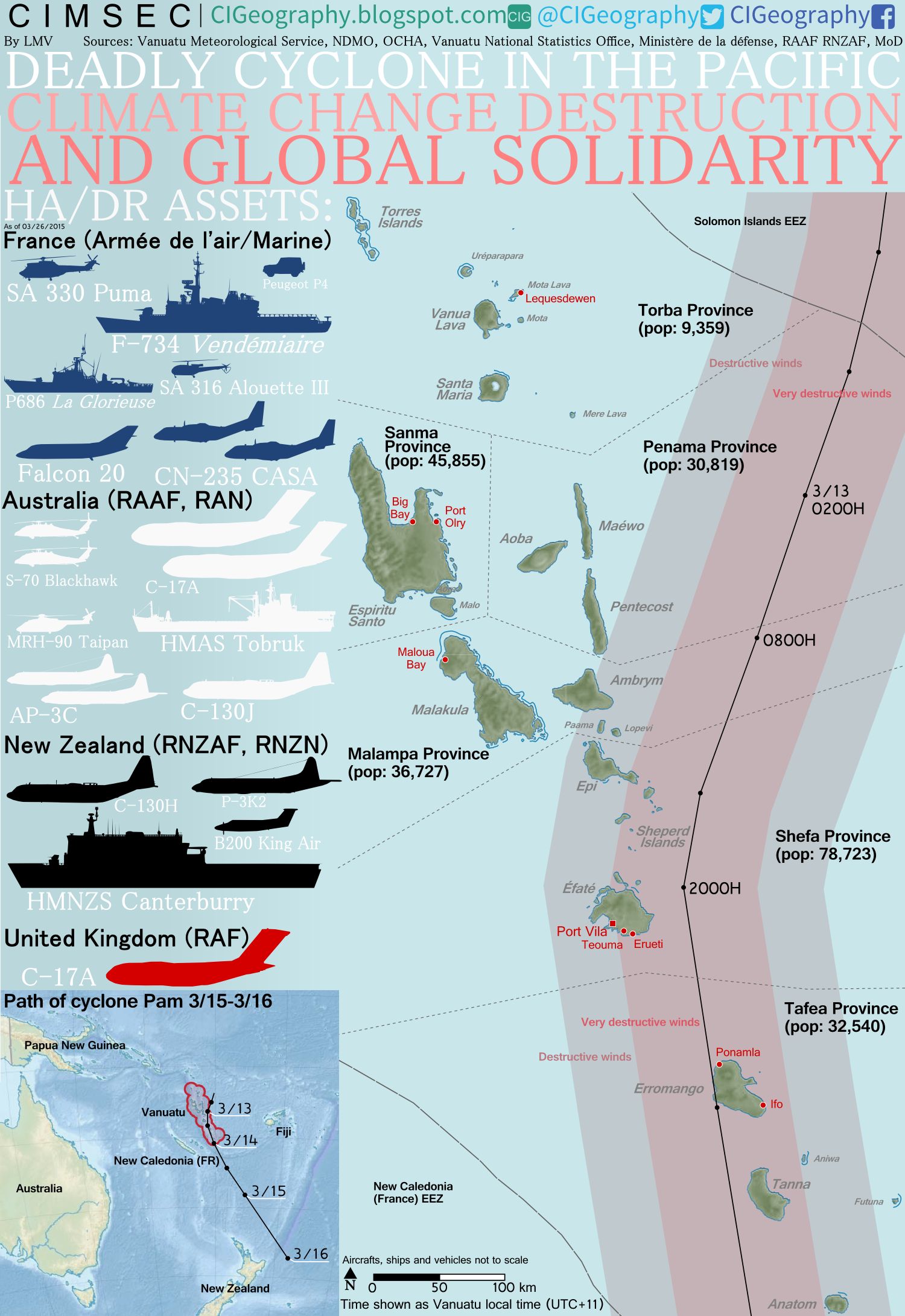
Updated from original as of 26 MAR 2015

A Story of Climate Change, Destruction and Global Solidarity
The little archipelago of Vanuatu in the South Pacific has been struck by a tropical cyclone of nearly unprecedented scale on the night from Friday the 13th (!) to 14th March 2015. With 165 MPH winds, the category 5 cyclone named ‘Pam’ is the most destructive tropical cyclone in Vanuatu’s history and the second most intense tropical cyclone in the South Pacific basin after Cyclone Zoe of 2002. Zoe hit several small islands in the Temotu Province of the Solomon Islands with a total population of 1700.
Pam was much stronger than Hurricane Katrina. Now, Vanuatu must begin the long process of recovering.
Casualties and damages
As of 16 March, the National Disaster Management Office confirmed 24 fatalities in total, including 11 from Tafea, 8 from Efate, and 5 from Tanna. However, there are still no reliable casualty figures from the rest of the country.
The president of Vanuatu, Baldwin Lonsdale, told the Associated Press:
“More than 1,000 people have been evacuated to evacuation centers and will be returning to their homes some time later today, if their homes still stand. That’s in the capital Port Vila alone. Confirmed dead in Port Vila is 6 and more than 30 injuries. I do believe the number of casualties will not be high. More than 90% of the buildings and houses in Port Vila have been destroyed or damaged. The state of emergency that has been issued is only for Port Vila. Once we receive an update on the extent of the damage in the provinces then another state of emergency will be issued for the outer islands. Despite widespread damage, Shefa remains the only province declared an emergency at this stage.”
Climate change as suspect N°1
President Lonsdale declared that climate change was contributing to the severe weather his country is experiencing: “Climate change is contributing to the disasters in Vanuatu. We see the level of sea rise. Change in weather patterns. This year we have heavy rain more than every year.” He added that his country had been “wiped out” by the catastrophe and would have to build “a new paradise again”.
President Lonsdale received the support of Anote Tong, president of Kiribati, who declared:
“For leaders of low-lying island atolls, the hazards of global warming affect our people in different ways, and it is a catastrophe that impinges on our rights and our survival into the future. There will be a time when the waters will not recede. It is now time to act on climate change.”
Kiribati is slowly disappearing under the seas and some of its population has been sent to Fiji as the first climate-change refugees of the world. Three islands of Kiribati have been struck by the cyclone Pam and Tuvalu is thought to have suffered extensive damage.
International aid on its way
The first priority now is humanitarian needs. 90% of the buildings have been destroyed and people have nowhere to stay. President Lonsdale has been asking for help:
“Clothing, eating utensils, and bathing, most of the necessary items of the households, all this has been destroyed and damaged. I really request for humanitarian needs and assistance at this stage. Tarpaulins, water containers, medical needs, gathering tools, and construction tools, all these are very important right now.”
Currently, 3,300 people are sheltering in 37 evacuation centers in Torba and Penama Provinces, and on the main island of Efate. UNICEF officials warned that the entire population of Tanna island faces starvation within days. Indeed, the cyclone destroyed all crops on the island. Islanders have just a few days of fruit and root vegetables left. There are very serious concerns about food stocks going forward.
Somewhat more positive, communications have been almost fully restored in Port Vila but other islands remain cut off from the world. People remain without power and ADRA Australia reported that most evacuation centers lacked even basic hand washing facilities. Another source of concern is contamined water supplies and the risk of the spread of dengue and malaria.
Aerial assessments have been carried out by military aircraft from New Caledonia, Australia and New Zealand. On Sunday, France sent a military plane, a Casa loaded with relief supplies, a vehicle to enable the recognition, a generator for a desalination plant, sheeting for shelters to protect a hundred families, the Route Opening equipment (chainsaws, and other tools), satellite communications, along with a logistics unit to support the detachment for 10 days. The plane came from Tahiti and took off from Noumea (New Caledonia), which is only 500 km away from Vanuatu. The Casa carried three soldiers, a member of the Civil Security and a member of the Red Cross. A second plane was sent on Monday.
The Australian Defence Force sent two C-17A Globemaster IIIs loaded with food and basic equipment and a C-130J with an on-board evaluation team. Foreign Minister Julie Bishop pledged long-term support for the recovery effort and sent two more military aircraft. AP-3C Orion maritime patrol was positioned in Honiara, Solomon Islands and started aerial reconnaissance of the archipelago. A second AP-3C Orion launched reconnaissance flights in northern Archipe.
In Polynesia, the Air Force is operating with a detachment consisting of a transport squadron of two tactical transport Casa 235s (ETOM 0082) while in New Caledonia, the Air Force maintains the transport squadron (ET52) with two Casa planes and three Puma helicopters. The frigate Vendémiaire, currently in Noumea, will be deployed to the remote island of Tanna on Friday. It will carry a Puma helicopter on board. Another humanitarian C-17 transport plane with emergency supplies took off from RAF Brize Norton, Oxfordshire, UK as part of a growing effort involving countries from around the world.
The 268,000 affected people are spread over 65 islands, with security experts likening it to dealing with 65 simultaneous emergencies. Furthermore, the difficulty of travel from one island to another makes it incredibly hard to compile an accurate picture of what the situation is.
I remember going to remote islands of Vanuatu with the French Navy: Ni-Vanuatu had nothing but gave us everything.
To those affected, we have everything. Let’s at least give them something. It’s up to us to make sure that these wonderful people don’t die suffering from hunger, thirst, cold, fear alone on their ravaged island.
The French chapter co-presidents
Text: Alix Willemez
Map: Louis Martin-Vézian
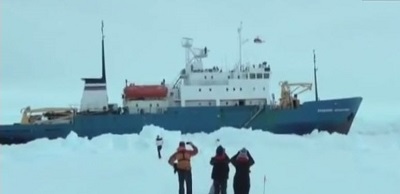 French and Chinese light icebreakers attempted to close the distance between open water and the beset ship but could not get sufficiently close to break her out. Even the United States Coast Guard’s Polar Star was diverted to assist. The decision was then made to fly a helicopter from the Chinese ship Xue Long to repatriate the hapless high paying passengers and “science party”. A short time later, having never declared a distress, and knowing the ice conditions would change, the Master and crew steamed clear of the ice under their own power. In the end, the Australian government shelled out nearly $2m Australian in “rescue efforts”. Shortly after the Akademik Shokalskiy steamed clear of the ice, the Russians felt the situation had been so distorted as to its danger in the press that a formal statement was made at IMO making it clear that the Akademik Shokalskiy and her crew were well suited to the conditions, and at no time in danger and that the Master of the vessel did not declare distress.
French and Chinese light icebreakers attempted to close the distance between open water and the beset ship but could not get sufficiently close to break her out. Even the United States Coast Guard’s Polar Star was diverted to assist. The decision was then made to fly a helicopter from the Chinese ship Xue Long to repatriate the hapless high paying passengers and “science party”. A short time later, having never declared a distress, and knowing the ice conditions would change, the Master and crew steamed clear of the ice under their own power. In the end, the Australian government shelled out nearly $2m Australian in “rescue efforts”. Shortly after the Akademik Shokalskiy steamed clear of the ice, the Russians felt the situation had been so distorted as to its danger in the press that a formal statement was made at IMO making it clear that the Akademik Shokalskiy and her crew were well suited to the conditions, and at no time in danger and that the Master of the vessel did not declare distress.
The Polar Code
The playing out of the Akademik Shokalskiy incident became a backdrop for more frenzied efforts at IMO to finalize drafts and meet Secretary General Koji Sekimizu’s desire for a mandatory Polar Code as soon as practicable.
Throughout 2014, various committees, sub-committees and working groups struggled to finalize consensus-based drafts of a Polar Code; however, the Secretary General’s strict timetable demanding an adoption before 2017 unfortunately resulted in the gradual streamlining of the initial robust drafts. In order to meet the timelines set down, issues that were remotely contentious or not subject to almost total consensual agreement were watered down or omitted.
Many parties were disappointed to see a much weaker document evolve into what was finally approved by the Maritime Safety Committee (MSC) in November. Others leapt to declare a new age of safety and environmental protection for Antarctic and Arctic waters.
Come the end of 2014, the Polar Code was still some way from actualization. The entire Part II – Prevention of Pollution must still go through the Maritime Environmental Protection Committee adoption, then the Council must approve both parts submitted by MSC and MEPC. Still, given the SG’s direction, there will be a mandatory Polar Code in existence by the first of 2017; however, it will not be the powerful and robust direction it was originally envisioned to be.
As a result, many classification societies and flag states are already issuing “guidance” to close gaps that have been left by the leaner “more friendly” Polar Code. The Nautical Institute is moving forward with their plans to put in place an Ice Navigation Training and Certification Scheme to meet basic requirements of the human element chapter of the Polar Code with defined standards of training and certification.
Ice Conditions
Climatically, 2014 was more in line with 2013 as a heavier ice year overall in the Arctic this summer. This followed a particularly bad year in the North American East coast, where heavier ice trapped ships and lengthened the icebreaker support season into May. In the Arctic, conditions were much tougher than the low record years of the past decade that led up to the last two. No one with any real understanding of global climate change would suggest that 2013 and 2014 can be held as the “end of global warming”; however the variability experienced shows that it will not be easy-going for polar shipping in the near future and that ice conditions will continue to wax and wane.
Polar Traffic
Traffic in the Polar Regions still has not met the expectations of some over-optimistic forecasts. The Northern Sea Route (NSR) experienced a dramatic reduction in traffic this year. Less than two dozen full transits were reported and initial figure indicate only 274,000 tons of cargo moved compared to 2013’s 1,356,000 tons. Though ice conditions in the NSR were somewhat more difficult in 2014, conditions were heavier in the Canadian Arctic.
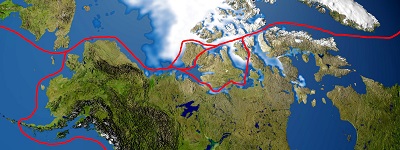
Notably absent this year was an expected repeat Northwest Passage transit by Nordic Bulk after their landmark Nordic Orion voyage in 2013. Fednav’s latest arrival, MV Nunavik, did however make a westbound transit late in the season.
Routine destination traffic, which includes the resupply of Arctic communities and export of resources, continues to show incremental increases in both the NSR and Northwest Passage (NWP). However there has been some cooling of interest in hydrocarbon exploration over the past year, whether it is as a result of sanctions against Russia for their activities related to Ukraine, or uncertainty of regulatory environment in American waters.
In the Antarctic region, traffic statistics remain static, driven mainly by research, resupply of research stations and the occasional adventure cruise vessel.
Ice Ship Orders and Construction
The growing interest in polar ice shipping is being felt in ship orders and construction. Numerous ice class ships are on the order books, and some notable orders and deliveries are those of Nordic Bulk with their Baltic ice class new builds and Canada’s Fednav with delivery of their newest icebreaker cargo ship Nunavik. The latter made news with the first unescorted commercial cargo vessel transit of the Northwest Passage this summer.
Russia has announced and commenced the construction of their new design conventionally powered icebreakers as well as three LK60 nuclear powered icebreakers. Russia is also building a number of icebreaking search and rescue vessels to meet their commitment to increase SAR capability after wholeheartedly embracing the Arctic Council’s 2010 Arctic SAR agreement.
At the beginning of the year, Russia took possession of the novel oblique icebreaker, Baltica. Shortly after delivering the Baltica, Finland’s Arctech Helsinki Shipyard announced a contract to build three icebreakers for the Northeast Sakhalin oil and gas field. Perhaps the largest Russian driven high ice class construction is the DSME designed 170,000m3 icebreaking LNGCs to be built for LNG export from the new Yamal field. These ships will be operated by a number of companies including SOVCOMFLOT, MOL and Teekay over the life of the Yamal project. A fleet of six support icebreakers for port and channel clearing, as well as line support in heavier coastal ice will also be built. Three more ice class shuttle tankers were ordered from Samsung Heavy Industries by SOVCOMFLOT for delivery by April 2017.
China is building a new icebreaker to complement their secondhand Xue Long, delivery in 2016; Britain has begun the work to acquire a new 130m icebreaker for delivery in 2019; Australia intends to replace the Aurora Australis hoped for by 2018 with the bidding narrowed to three contenders in the fall; Germany is not far behind in plans to replace the venerable Polar Stern; and, Finland has a new Baltic LNG fuelled Icebreaker under construction and has announced a billion Euro plan to replace their current fleet of icebreakers in coming years.
India has also announced plans to build a polar research icebreaker to be operational before the end of the decade. Columbia has announced plans to build and send an ice-capable research ship to Antarctica while Chile’s president announced in December plans to build an ice-capable research ship for Antarctic service as soon as practicable.
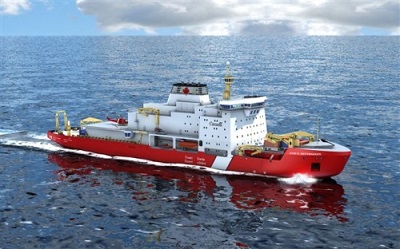
Though the American built light icebreaker research vessel Sikiluaq entered service this past year, the United States and Canada continue to be mired in indecision or delays with respect to ice-capable ship construction. There are no clear plans to consider replacing the ageing United States Coast Guard’s polar class ships, and Canada’s much vaunted announcement of the acquisition of the new generation polar icebreaker, which was named by the government as the John G. Diefenbaker, has seen cost increases and delays in delivery. The original delivery of 2017, for the Diefenbaker has slid to the right, first to 2020 and now rumored to be 2022. Reports now indicate the original construction cost of $750m CDN has climbed to well over $1.2B CDN. Given the advancing age of Canada’s venerable icebreaking fleet, it is surprising that only one replacement has been approved.
The Royal Canadian Navy’s plans to build 6-8 ice-class Arctic Offshore Patrol vessels has experienced similar cost overruns and delays even before steel has been cut. News reports at the end of 2014 indicated the number of ships that could be obtained would likely be fewer than originally announced, and only three vessels could be built for the allocated budget.
Changes in Arctic Offshore
Russia’s almost frantic growth in Arctic exploration and exploitation over the past decade has taken a downturn in the past months. As a result of increasing sanctions put in place by European Union, the United States and other nations, and the rapidly dropping price of oil in the last weeks of 2014, Russia has either seen the gradual pulling away of western partners, or has terminated contracts themselves (such as the recent termination of contracts with Norwegian OSV operators), and reduced projections for hydrocarbon export. As a result, hydrocarbon exploration and exploitation activities in the Russian Arctic began to slow in the latter part of the year.
In the midst of pullbacks from exploration, Russia has continued to bolster their Arctic presence, opening the first three of ten Arctic search and rescue centers in 2014, taking delivery of the first of six icebreaking search and rescue ships and increasing naval presence capability.
Risks Remain Evident
Just as the situation with the Akademik Shokalskiy indicated in the Antarctic in the beginning of the year (in the latter part of the Antarctic shipping season), an incident with a Northern Transportation Company Limited barge adrift in the Beaufort Sea at the end of the Arctic shipping season highlighted the remote nature of polar shipping operations. In each case, the situations were exacerbated by the lack of nearby rescue resources. While the Akademik Shokalskiy eventually broke free on her own, the NTCL barge was left to freeze into the ice over the winter as the tug initially towing was unable to reconnect and no other resources were close enough to recover the nearly empty fuel barge.
Discovery of the Wreck of HMS Erebus
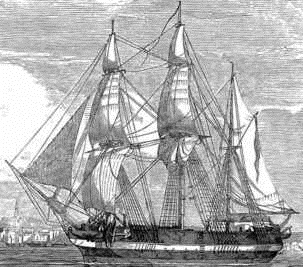
One long standing search and recovery mission did result in a very successful search this year as the Canadian Coast Guard ship Sir Wilfrid Laurier and onboard researchers from Canadian Hydrographic Services and Parks Canada discovered the well preserved remains of Sir John Franklin’s flag ship HMS Erebus in the waters near to King William Island in the Canadian central Arctic.
Under command of Sir John Franklin, HMS Erebus and Terror set out from England in the mid 1800’s in what was thought to be the most technologically advanced and therefore “bound to be successful” effort to discover and sail the Northwest Passage. Tragically, both of Franklin’s ships became hopelessly trapped in the ice, the crews eventually abandoned both vessels and were never seen alive again. Most of the Canadian Arctic was charted in the many searches at sea and from ashore in search of survivors, many relics were discovered including a note that described the abandonment, but the vessels themselves remained lost until this summer when HMS Erebus was discovered.
This post originally appeared in The Maritime Executive.
When designing OPVs the core question a nation will need to ask itself is how big in terms of area, where the EEZ is (i.e. Northern waters, or Equatorial waters), how far is it that area from the nation’s bases and how much is the EEZ worth. Vessels which are required to operate in stormy or icy waters (i.e. those operated by Denmark) will need to be as structurally strong and survivable as possible, with a high freeboard to help with large waves, as well as having as much of their equipment internalised as can be, and all equipment that can’t be internalised made easy to clear of ice. In contrast vessels which are to operate in warmer areas (i.e. to an extent France) will need enhanced cooling systems, not only to keep the personnel at a workable temperature, but also the computers and machines. A vessel which could find itself in both situations equally (i.e. those operated by Australia or Britain), will of course need both attributes; it is very difficult to retrofit sufficient cooling into a small ship built to be strong, equally it is very difficult to strength a ship that is not built to be strong. Simply put, a lot of thought needs to be placed at the very beginning of the conception and design process with OPVs as to what is needed, what is wanted and what is best to make sure: because there is not the space available to do much rectifying at a later date.
 Figure 8. Denmark’s EEZ, total area of 2,551,238km2 encompasses a large area of North Atlantic and the Arctic[i] Figure 8. Denmark’s EEZ, total area of 2,551,238km2 encompasses a large area of North Atlantic and the Arctic[i] |
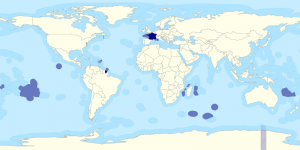 Figure 9. France’s EEZ totals in at 11,035,000km2 and is spread all around the world[ii] Figure 9. France’s EEZ totals in at 11,035,000km2 and is spread all around the world[ii] |
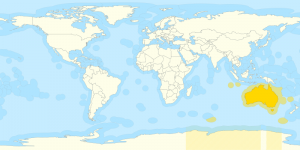 Figure 10. Australia’s EEZ, total area of about 8,505,348km2 that straddles the South Pacific and Indian Oceans, whilst encompassing a large chunk of Antarctica[iii] Figure 10. Australia’s EEZ, total area of about 8,505,348km2 that straddles the South Pacific and Indian Oceans, whilst encompassing a large chunk of Antarctica[iii] |
OPVs, especially those deployed to patrol distant territories or honour commitments to allies, will often be the nation they represent first responders to natural disasters; therefore building a measure of preparation into the design, i.e. storage space for medical supplies, power tools, tents and portable water purification equipment would be of advantage. This is a situation where a nation has the opportunity to engage in a win-win scenario; they help another nation (nations are not altruistic but they do like to look good and earn favours), they get to build a closer relationship with the nation experiencing the disaster and that nation gets some help. Much the same can be said for an OPV’s role in Search and Rescue operations, most nations have some form of lifeboat organisation – whether it is part of the government, independent or a mix differs from nation to nation. OPVs are of course not lifeboats, but if they are present then they can again be crucial first responders, especially in the case of mid-ocean emergencies. There is though a war (or at least combat) orientated mission, which has been highlighted by the events of October 2014 in Sweden; anti-submarine warfare, or ASW[iv].
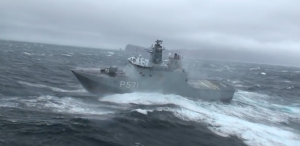 Figure 11. HDMS Ejnar Mikkelsen a Knud Rasmussen class OPV of the Danish Navy[v] Figure 11. HDMS Ejnar Mikkelsen a Knud Rasmussen class OPV of the Danish Navy[v] |
Now it is reasonable to pose the question ‘how useful could a vessel without a sonar (with the exception of the Danish Knud Rasmussen class[vi] which take advantage of stanflex technology[vii] to acquire one) or torpedoes be to an ASW operation, after all it isn’t a frigate?’ In fact OPVs, even those being proposed in this paper are not even corvettes (being closest in armament to a gunboats), do have something to offer ASW operations, especially those with the ability to support helicopters and operate UAVs. Helicopters have become the cornerstone of ASW operations; whilst Long Range Maritime Patrol Aircraft and ships with towed sonar arrays are very capable assets which really do make a difference: a legacy of the Cold War has been an almost dominance of helicopters in the practice of ASW[viii]. Helicopters of course make use of sonar buoys and dipping sonar to locate enemy submarines, such equipment could also be transferred in time to suitably capable UAVs – some of which are already in operation[ix]. This is in many ways an argument for building in flexible spaces into ship designs, as the one thing that can’t be easily added into a ship is space, yet it is space which serves best to future proof it.
It’s not only ships though that need to be future proofed, so do crews and commanders. Small ships, like OPVs, offer almost unique opportunities for navies to test out commanders at junior ranks with a fair amount of responsibility; at a far lower risk than if the achieve higher rank and untested make their mistakes when in command of far more expensive vessels. Furthermore, a naval commander will often find themselves acting in a diplomatic capacity[x] a fact which has been highlighted by Julian Corbett as well as other authors[xi] throughout the years. Therefore Command of an OPV, especially when despatched to the edges of an EEZ or to patrol distant territories will provide young officers a plethora of opportunities to develop their skills and gain vital experience in this role. The reason that OPVs are unique in this regard is because the other small vessel type, the mine countermeasure vessel (MCMV), is becoming more and more specialised – even as the equipment becomes more containerised and dependent upon unmanned vehicles (although divers retain a vital role in the work); meaning that command of such vessels acting in that role itself requires more and more specialised knowledge.
“The unassailable political lessons of the Falklands are that disregarding a threat does not make it disappear”
James Cable[xii]
The same can be said for ships, and most definitely for OPVs – disregarding, or down playing the likelihood of circumstances that will require their capabilities doesn’t mean it won’t happen. Even in this work, there are possible missions which OPVs could be used for, beyond those it has discussed. For example, with a suitable CIWS, and dual-purpose deck gun these vessels could make a very much needed war time point defence assets for MCMVs, auxiliaries, ships taken up from trade[xiii] and amphibious ships (including landing craft). In a time of shrinking forces, these are not frigate or destroyer replacements, but they would be able to help; they are able to be the ‘quantity’. Which leads to another scenario for the future. That OPVs cease to exist as they are now, and that nations begin to pursue something more similar to where the Danish model has already gone.
Under this scenario the future is a ship of ~2400tons, with a range of 6-7,000nmi, and which in its basic OPV form is armed with probably either a 57mm or 76mm deck gun[xiv], a CIWS and two single 20mm or 30mm mounts, would carry a rotary UAV and have the ability to deploy and recover boats from a ramp. However, by making use of a system similar to that of the Stanflex modular system, can be quickly modified with additional modules[xv] to make it an MCMV, Oceanography vessel or Point Defence ship (with addition of self-sufficient surface to air missiles which don’t require specialist radar, like the C-Dome is reported to be[xvi]) as required by operation. Although to maintain those skills and to meet ongoing operational commitments some vessels would have to be virtually permanently tasked as the former two; with other ships taking over as required by maintenance. This is because as said above the work of MCMV vessels is particularly specialised, and requires a lot of practice to keep at the level it’s required for war time. Oceanography is of course and ongoing commitment, requiring its own cadre of specialised staff, and equipment, which are easier to leave in place as long as possible so they can ‘bed down’. This all though is not to mean that there are not significant requirements for British Patrol vessels, as Figure 12 (below) highlights; the British EEZ is very expansive.
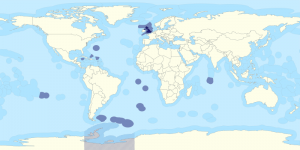 Figure 12. Britain’s EEZ incorporates an area over 6,805,586km2, and whilst world encompassing is concentrated in the Atlantic[xvii] Figure 12. Britain’s EEZ incorporates an area over 6,805,586km2, and whilst world encompassing is concentrated in the Atlantic[xvii] |
In the case of the Royal Navy which is currently upgrading its forces to seven River Class OPV’s, operates eight each of the Hunt and Sandown class MCMVs, two Echo Class multi-purpose survey vessels, representing a force of twenty-five ships. Now if all those ships were of the same design, then instead of it being seven OPVs, sixteen MCMVs and two survey vessels, it would be a pool of twenty five vessels (with operational cost savings from streamlining training and maintenance that could be twenty-eight, or even more should Britain continue its focus on reserves and decide to give the Royal Naval Reserve proper ships again[xviii]) that could be orientated as required by circumstance.
Now this is nothing new, the RN’s MCMVs already often do secondary duty as OPVs, and in fact the scenario outlined is to an extent (common hulls), what the Mine Countermeasures, Hydrography and Patrol Vessel (MCHPV) program envisaged[xix]. Unfortunately, and despite the publication of the Black Swan sloop Concept[xx], when the opportunity came to order three more ships for the OPV role – it was not this program which was sourced, but the existing River Class[xxi], suggesting that it has at least been put back if not having been sacrificed for the time being on the altar of the Type 26 Frigate. What is worse is actually the base design of the River class, with its proven track record, adaptability and RN operational experience, would actually (on the face of it) make the perfect base pattern for the MCHPV to be built from. Britain though would not be the only nation which could benefit from such a design, so could other nations such as Japan, South Africa, India, Australia and Canada.
All those nations are nations which are building themselves up in the maritime sense, they have to really, as the world has got more complex and sources of danger have diversified the necessity to protect what is theirs has grown. For the Japanese who have a strong escort force they would be most likely less interested in the point-defence adaptability, but considering their ‘peacetime’ problems of East China Sea EEZ patrol and probable war time issues with mines an adaptable force could prove a very workable and cost effective solution. For Australia and Canada with such vast areas to cover in such hostile seas then the more OPVs the better, more importantly with their relatively small force sizes, some second tier fighting ships might well be an attractive foundation on which to grow operational capabilities. India which has for a long time prided itself on being the strongest Asian naval power, is now facing challenges and a future where there are now easy strategic choices or even black & white decisions – making procurement of a flexible asset of the form of OPV/specialist duty vessel a more practical methodology of future proofing.
This is though beginning to sound similar to a ship design which has dominated American procurement discussion in recent years, the Littoral Combat Ship or LCS[xxii]. This was billed as the go everywhere, do everything low level combatant. Which has become its millstone, because it was supposed to be a jack of all trades it is good at none. Everything was designed from scratch, tailor made to fit this new class of warship. Unfortunately that design included a fixation on stealth, primarily because of the ‘Littoral’, meaning close to shore, in its name. The important difference between the LCS, OPVs and even what is being proposed is that the latter two vessel types are not supposed to do everything. The whole way through this work a constant refrain has been, ‘not a frigate’; OPVs do not need to be stealthy to the extent of the LCS, they do no need multiple hangars or even custom equipment – because that level of equipment is not needed by their mission set. Everything that an OPV needs, even the adaptable ship proposed in this section, is procurable ‘off the shelf’ – theoretically offering governments the opportunity to keep very tight control of the costs because they are known in advance. Even with all its capability the LCS has because of its failure to be able to do everything, had its procurement cut short and the USN are now looking for a frigate. One of the options for which is actually an upgraded version of the Coast Guards National Security Cutter[xxiii].
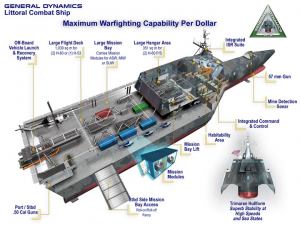 Figure 13. the Austral’s Independence class LCS, the second of the two designs, its trimaran hull form and distinctive menacing stealth design has already made it a feature of cinema, but also make it cost wise firmly in the frigate classification, despite its limited weaponry[xxiv]. Figure 13. the Austral’s Independence class LCS, the second of the two designs, its trimaran hull form and distinctive menacing stealth design has already made it a feature of cinema, but also make it cost wise firmly in the frigate classification, despite its limited weaponry[xxiv]. |
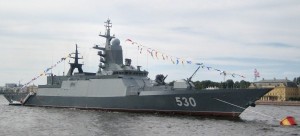 Figure 14. Russian Steregushchiy class corvette[xxv], the Russian equivalent of the LCS, it bristles with weapons and is not really adaptable: these vessels (like the Chinese Type 056) are most definitely small warships rather than a patrol vessel. Figure 14. Russian Steregushchiy class corvette[xxv], the Russian equivalent of the LCS, it bristles with weapons and is not really adaptable: these vessels (like the Chinese Type 056) are most definitely small warships rather than a patrol vessel. |
“…the greatest value of the Navy will be found in events that fail to occur because of its influence”
Prof. Colin Gray[xxvi]
As has hopefully been shown these words of Prof Gray could be the watchwords for OPVs. Whether in terms of design or employment, the mission of such a vessel is to prevent events from happening through their own presence, and through the influence that being present gives a nation.
At the beginning of this work a very simple question was asked, ‘What do OPVs need to be able to do, to do what they do?’, the answer unfortunately is not so simple. The first part of the question though that needs to be answered is actually the second. This is because what a ship does is ultimately the crucial overarching idea which must dictate their design. In theory the OPVs overarching design idea is to be able to maintain their nation’s EEZ through patrolling, and maximise their nation’s security in general through presence. The trouble is that, whilst put like that it sounds like a two plus two sum scenario, the reality as has been discussed is far more complex. There are reasons that the Nigerian OPV version of the Chinese corvette displaces 300tons more; to start with it is operating primarily in the South Atlantic rather than the more gentle waters of the Pacific, beyond this is the fact that whereas the corvettes can call in support of larger ships – the Nigerian navy hasn’t yet reached that point. This serves as an example as to why it’s so difficult to compare one nations OPV to another’s, as every nation has unique needs, and an its own global perspective which will impact upon what they think they need, therefore what they build.
This complexity then feeds into the first part of the question, for if a vessel is conceived to carry out a primarily fishery protection role then it’s armament beyond machine guns becomes rather unnecessary; if however it is likely to be facing off with other nations warships – then perhaps it needs to be more corvette/small frigate, less OPV. The trick for any nation will be in getting the balance right, because getting it wrong will be far more expensive in lives and treasure. To get it right though then a nation must first properly gauge the threat that its ships will likely face, and just as importantly what level of support they are likely to receive – for a ship that will be on its own and only receive support under the best of circumstance must by necessity be more self-sufficient than one for which possibly overwhelming firepower, medical support or stores are just a beep away.
OPV are because of all this a very revealing class of vessel to watch, by this it’s meant that a nation’s choices will demonstrate much about what their intentions are. The longer the endurance of an OPV the more a nation would seem to be intent on achieving constant presence within their EEZ. This though is not answering the question, the answer to the question is that once a nation has decided what it needs to do, and what it wants to do then it must equip its OPVs accordingly; but they can’t go too far wrong if that OPV is equipped with UAVs, a decent deck gun, a CIWS, the appropriate sensors and possibly most importantly the ability to rapidly deploy and recover boats. Everything beyond that is up to the nation involved.
Dr. Alexander Clarke is our friend from the Phoenix Think Tank in the United Kingdom and host of the East-Atlantic edition of Sea Control.
———————————————————————————-
[i] (Wikipedia 2014, Exclusive Economic Zones (EEZ) 2009)
[ii] (Wikipedia 2014, Exclusive Economic Zones (EEZ) 2009)
[iii] (Wikipedia 2014, Exclusive Economic Zones (EEZ) 2009)
[iv] (Marzal 2014)
[v] (www.prismdefence.com 2010)
[vi] (CASR 2008, naval-technology.com 2014)
[vii] (Seaforces.org 2014) – this is a brilliant system which allows for a whole range of mission modules to be changed in and out re-rolling a ship in a matter of hours; advantages of this system include reducing maintenance & upgrade costs – by being able to carry out the work inside at a pace dictated by the work, not by the need to get the ship back to sea. The problem with it are that whilst it is really a better version of ‘fitted for not with’ (a famous phrase attached to many RN vessels), as the ships can be fitted very quickly, a small ship will always be restricted to being a general specialist rather a general purpose ship. That though is really not that big a bug to bear.
[viii] (Holmes 2014, USN 2014)
[ix] (Clarke, August 2013 Notes: Possibilities of Future RN AEW 2013, Clarke, August 2013 Notes: UAVs = Cruise Missiles = UAVs… what does the future look like for Navies? 2013)
[x] (Clarke, August 2013 Thoughts: Naval Diplomacy – from the Amerigo Vespucci to a Royal Yacht 2013)
[xi] (J. S. Corbett 1911, Lord Chatfield 1942, Cable, Gunboat Diplomacy 1919-1979, Political Applications of Limited Naval Force 1981, Mahan 1987)
[xii] (Cable, Britain’s Naval Future 1983, xiii-xiv)
[xiii] Which have been a part of warfare forever, and have been a core part of war time planning for many years – as best displayed in the work the USN did on War Plan Orange (Miller 1991, 86-99)
[xiv] In the case of the UK which seems to have enforced a no new gun policy, then there would seem to be a perfect opportunity for some inter-service collaboration, the new army 40mm gun would seem ripe for a sea going conversion, and whilst not being much better than the 30mm option, it would provide a better than nothing increase whilst not requiring a new gun.
[xv] Optimum number would probably be two – four, depending upon whether the CIWS and Deck Gun were also modular installations or were traditionally emplaced.
[xvi] (Eshel 2014)
[xvii] (Wikipedia 2014, Exclusive Economic Zones (EEZ) 2009)
[xviii] Yes this may look a little ‘pie in the sky’ in the light of recent decisions, but considering even a cursory glance at what this force is required to do includes:
When that is considered, alongside the fact that many of these commitments requiring multiple ships, it could make anyone wonder how the RN manages it with a force of just 25 vessels – which are not ‘interchangeable’ as those proposed would be.
[xix] (naval-technology.com 2012)
[xx] (Ministry of Defence 2012)
[xxi] (Navy News 2014)
[xxii] (Defence Industry Daily Staff 2014)
[xxiii] (Axe 2014)
[xxiv] (Defence Industry Daily Staff 2014)
[xxv] (naval-technology.com 2014)
[xxvi] (Royal Navy 2014)
Agencies. 2014. “’Unrealistic’ for Turkey to send ground troops to Syria.” The Telegraph. 09 October. Accessed November 16, 2014. http://www.telegraph.co.uk/news/worldnews/islamic-state/11151562/Unrealistic-for-Turkey-to-send-ground-troops-to-Syria.html.
Anzalone, Joseph. 2010. “The Virtue of a Proportional Response: The United States Stance Against the Convention on Cluster Munitions.” Pace International Law Review 22 (1): 183-211. Accessed November 03, 2014. http://digitalcommons.pace.edu/cgi/viewcontent.cgi?article=1028&context=pilr.
Axe, David. 2014. “One of These Mean Little Ships Could Be the Navy’s New Frigate; Pentagon wants a tougher warship to replace the Littoral Combat Ship.” War Is Boring. 24 February. Accessed November 17, 2014. https://medium.com/war-is-boring/one-of-these-mean-little-ships-could-be-the-navys-new-frigate-ebf51ce106fe.
Babij, Orest. 2009. “The Royal Navy and Defence of the Empire 1928-34.” In Far-Flung Lines; Studies in Imperial Defence in Honour of Donald Mackenzie Schurman, edited by Keith Neilson and Greg Kennedy, 171-189. London: Routledge.
Bacon, Reginald, and F E McMurtrie. 1940. Modern Naval Strategy. London: Frederick Muller.
Bannister, Sam. 2014. “Portsmouth ship HMS Dragon now tracks Russian Navy task group.” The News. 08 May. Accessed November 12, 2014. http://www.portsmouth.co.uk/news/defence/portsmouth-ship-hms-dragon-now-tracks-russian-navy-task-group-1-6047308.
BBC. 2014. “Canberra monitoring Russian warships ‘nearing Australia’.” BBC News – Australia. 13 November. Accessed November 14, 2014. http://www.bbc.co.uk/news/world-australia-30032466.
—. 2009. “China hits out at US on navy row.” BBC News. 10 March. Accessed November 03, 2014. http://news.bbc.co.uk/1/hi/world/asia-pacific/7934138.stm.
—. 2014. “China ‘spy ship’ at US-led navy exercise off Hawaii.” BBC News China. 21 July. Accessed November 03, 2014. http://www.bbc.co.uk/news/world-asia-china-28400745.
—. 2014. “Q&A: South China Sea dispute.” BBC News ASIA. 8 May. Accessed November 03, 2014. http://www.bbc.co.uk/news/world-asia-pacific-13748349.
Beaumont, Peter. 2014. “How effective is Isis compared with the Iraqi army and Kurdish peshmerga?” The Guardian. 12 June. Accessed November 03, 2014. http://www.theguardian.com/world/2014/jun/12/how-battle-ready-isis-iraqi-army-peshmerga.
Beehner, Lionel. 2006. “Israel and the Doctrine of Proportionality.” Council on Foreign Relations. 13 July. Accessed November 03, 2014. http://www.cfr.org/israel/israel-doctrine-proportionality/p11115.
Boeing. 2014. “ScanEagle.” Boeing; Defense, Space & Security . Accessed November 05, 2014. http://www.boeing.com/boeing/defense-space/military/scaneagle/.
Cable, James. 1983. Britain’s Naval Future. London: Macmillan Press.
—. 1981. Gunboat Diplomacy 1919-1979, Political Applications of Limited Naval Force. London: Macmillan, Studies in International Security.
CASR. 2008. “An Overview of Current, On-Going Danish Naval projects 2005-2009.” CASR. May. Accessed November 05, 2014. http://www.casr.ca/id-danish-naval-projects-rasmussen.htm.
Chinese Military Review. 2013. “Multiple Chinese Type 056 Light Corvette @ Naval Base .” Chinese Military Review. Accessed November 03, 2014. http://chinesemilitaryreview.blogspot.co.uk/2013/07/multiple-chinese-type-056-light.html.
Clapp, Michael, and Ewen Southby-Tailyour. 1997. Amphibious Assault Falklands, The Battle of San Carlos Water. London: Orion Books.
Clarke, Alexander. 2013. “August 2013 Notes: Possibilities of Future RN AEW.” Naval Requirements. 01 September. Accessed November 05, 2014. http://amphibiousnecessity.blogspot.co.uk/2013/09/august-2013-notes-possibilities-of_1.html.
—. 2013. “August 2013 Notes: UAVs = Cruise Missiles = UAVs… what does the future look like for Navies?” Naval Requirements. 01 September. Accessed November 05, 2014. http://amphibiousnecessity.blogspot.co.uk/2013/09/august-2013-notes-uavs-cruise-missiles.html.
—. 2013. “August 2013 Thoughts: Naval Diplomacy – from the Amerigo Vespucci to a Royal Yacht .” Naval Requirements . 01 September. Accessed November 05, 2014. http://amphibiousnecessity.blogspot.co.uk/2013/09/august-2013-thoughts-naval-diplomacy.html.
—. 2009. “Carriers; Fully Loaded – Admiral Kuznetsov.” Naval Requirements . 20 February. Accessed November 12, 2014. http://amphibiousnecessity.blogspot.co.uk/2009/02/carriers-fully-loaded-admiral-kuznetsov.html.
—. 2013. “October 2013 Thoughts (Extended Thoughts): Time to Think Globally .” Naval Requirements. 02 November. Accessed November 03, 2014. http://amphibiousnecessity.blogspot.co.uk/2013/11/october-2013-thoughts-extended-thoughts.html.
Comcercial Crime Services. 2014. “IMB Piracy & Armed Robbery Map 2014.” ICC Commercial Crime Services. Accessed November 03, 2014. https://www.icc-ccs.org/piracy-reporting-centre/live-piracy-map.
Corbett, Julian S. 1911. Some Principles of Maritime Strategy. Uckfield: The Naval & Military Press Ltd.
Corbett, Julian S. 2005.b. England in the Seven Years War. Vol. II. II vols. London: Elibron CLassics.
—. 2005.a. England in the Seven Years War. Vol. I. II vols. London: Elibron Classics.
Corbett, Julian S., and H. J. Edwards, . 1914. The Cambridge Naval and Military Series. London: Cambridge University Press.
Corcoran, Kieran. 2014. “Royal Navy frigate forced to intercept two Russian military landing craft as they steamed up English Channel.” MailOnline. 26 June. Accessed November 12, 2014. http://www.dailymail.co.uk/news/article-2670417/Royal-Navy-patrol-ship-forced-intercept-two-Russian-military-landing-craft-steamed-English-Channel.html.
Council on Foreign Relations. 2013. “The Global Regime for Terrorism .” Council on Foreign Relations. 19 June. Accessed November 03, 2014. http://www.cfr.org/terrorism/global-regime-terrorism/p25729.
Dean, Sarah, Sally Lee, and Freya Noble. 2014. “Showdown in the Coral Sea as navy sends THIRD warship to intercept Russian fleet – while Abbott peels off for breakfast with British PM David Cameron in Sydney ahead of G20 summit.” Mail Online. 14 November. Accessed November 14, 2014. http://www.dailymail.co.uk/news/article-2833179/US-kept-close-watch-Russian-navy-fleet-heading-Australian-waters-believed-acting-orders-spy-leaders-G20-summit.html.
Dearden, Lizzie. 2014. “Russian sends warships towards Australia as Putin prepares to attend Brisbane G20 summit.” The Independent. 12 November. Accessed November 14, 2014. http://www.independent.co.uk/news/world/australasia/russian-warships-heading-for-australia-as-putin-prepares-to-attend-brisbane-g20-summit-9855308.html.
Defence Industry Daily Staff. 2014. “LCS: The USA’s Littoral Combat Ships.” Defence Industry Daily. 20 October. Accessed November 15, 2014. http://www.defenseindustrydaily.com/the-usas-new-littoral-combat-ships-updated-01343/.
defenceweb. 2014. “China launches first Nigerian offshore patrol vessel .” DefenceWeb. 30 January. Accessed November 03, 2014. http://www.defenceweb.co.za/index.php?option=com_content&view=article&id=33409:china-launches-first-nigerian-offshore-patrol-vessel&catid=51:Sea&Itemid=106.
Defense Industry Daily. 2014. “From Dolphins to Destroyers: The ScanEagle UAV.” Defense Industry Daily. 29 September. Accessed November 05, 2014. http://www.defenseindustrydaily.com/from-dolphins-to-destroyers-the-scaneagle-uav-04933/.
Dingli, Shen, Elizabeth Economy, Richard Haass, Joshua Kurlzntzick, Sheila A. Smith, and Simon Tay. 2013. “China’s Maritime Disputes.” Council on Foreign Relations. Accessed November 03, 2014. http://www.cfr.org/asia-and-pacific/chinas-maritime-disputes/p31345#!/?cid=otr-marketing_use-china_sea_InfoGuide.
Drury, Ian. 2010. “Flashpoint in The Falklands: Argentine anger as British oil rig moves in today and MoD beefs up our forces.” Mail Online. 20 February. Accessed November 03, 2014. http://www.dailymail.co.uk/news/article-1251901/Falkland-Islands-oil-row-Argentina-warns-UK-complacency.html.
Eshel, Tamir. 2014. “Rafael extends Iron Dome C-RAM to the naval domain.” Defence Update. 26 October. Accessed November 03, 2014. http://defense-update.com/20141026_c-dome.html#.VFgQyWdyaM9.
European Defence Agency. 2014. “European Defence Agency .” European maritime surveillance network reaches operational status. 27 October. Accessed November 03, 2014. https://www.eda.europa.eu/info-hub/news/article/2014/10/27/european-maritime-surveillance-network-reaches-operational-status.
“Exclusive Economic Zones (EEZ).” Sea Around Us Project; The Pew Charitable Trusts. Accessed November 04, 2014. http://www.seaaroundus.org/eez/.
Farmer, Ben. 2014. “Russian aircraft carrier sails into English Channel.” TheTelegraph. 08 May. Accessed November 12, 2014. http://www.telegraph.co.uk/news/uknews/defence/10816463/Russian-aircraft-carrier-sails-into-English-Channel.html.
Ferris, John Robert. 1989. Men, Money and Diplomacy; the evolution of British strategic foreign policy, 1919-1926. New York: Cornell University Press.
Field, Andrew. 2004. Royal Navy Strategy in the Far East 1919-1939; planning for war against japan. London: Frank Cass.
Friedman, Norman. 1988. British Carrier Aviation. Annapolis: Naval Institute Press.
Gardner, David. 2011. “Brazil sides with Argentina against Britain as Falklands warship is turned away from Rio.” Mail Online. 11 January. Accessed November 03, 2014. http://www.dailymail.co.uk/news/article-1346094/Brazil-sides-Argentina-Britain-Falklands-warship-turned-away-Rio.html.
Gorshkov, Sergey Georgiyevich. 1980. The Sea Power of the State. Oxford: Pergamon Press.
Halliday, Josh. 2014. “Argentina ‘will seek to punish’ firms that drill for Falklands oil.” the guardian. 12 January. Accessed November 03, 2014. http://www.theguardian.com/world/2014/jan/12/argentina-falklands-oil-international-courts.
Heydarian, Richard Javad. 2014. “The Great South China Sea Clash: China vs. Vietnam.” The National Interest. 12 August. Accessed November 03, 2014. http://nationalinterest.org/feature/the-great-south-china-sea-clash-china-vs-vietnam-11058.
Holmes, James R. 2014. “Relearning Anti-Submarine Warfare.” The Diplomat. 30 October. Accessed November 16, 2014. http://thediplomat.com/2014/10/relearning-anti-submarine-warfare/.
Horrell, Drew F.T. 1991. “Telepossession Is Nine-Tenths of the Law: The Emerging Industry of Deep Ocean Discovery.” Pace International Law Review 3 (1): 309-362. Accessed November 03, 2014. http://digitalcommons.pace.edu/cgi/viewcontent.cgi?article=1022&context=pilr.
Hosford, Zachary M., and Ely Ratner. 2013. “The Challenge of Chinese Revisionism: The Expanding Role of China’s Non-Military Maritime Vessels.” Center for New American Security. 1 February. Accessed November 03, 2014. http://www.cnas.org/files/documents/flashpoints/CNAS_Bulletin_HosfordRatner_ChineseRevisionism.pdf.
Insitu. 2013. “ScanEagle System.” Insitu. Accessed November 05, 2014. http://www.insitu.com/systems/scaneagle.
Keiler, Jonathan F. 2009. “The End of Proportionality.” The US Army War College Quarterly Parameters, 53-64. Accessed November 03, 2014. http://strategicstudiesinstitute.army.mil/pubs/parameters/Articles/09spring/keiler.pdf.
LaGrone, Sam. 2014. “Australian MoD: Russian Surface Group Operating Near Northern Border.” USNI News. 12 November. Accessed November 14, 2014. http://news.usni.org/2014/11/12/australian-mod-russian-surface-group-operating-near-northern-border?utm_source=USNI+News&utm_campaign=c0ba89d6d6-USNI_NEWS_DAILY&utm_medium=email&utm_term=0_0dd4a1450b-c0ba89d6d6-230392337&mc_cid=c0ba89d6d6&mc_eid=bc692ba7a.
—. 2014. “China Sends Uninvited Spy Ship to RIMPAC.” USNI News. 03 November. Accessed July 18, 2014. http://news.usni.org/2014/07/18/china-sends-uninvited-spy-ship-rimpac.
—. 2014. “Egyptian Patrol Craft Attacked by Ships with Possible Ties to Terrorist Arms Trade.” USNI News. 13 November. Accessed November 14, 2014. http://news.usni.org/2014/11/13/egyptian-patrol-craft-attacked-ships-possible-ties-terrorist-arms-trade?utm_source=USNI+News&utm_campaign=c0ba89d6d6-USNI_NEWS_DAILY&utm_medium=email&utm_term=0_0dd4a1450b-c0ba89d6d6-230392337&mc_cid=c0ba89d6d6&mc_eid=bc692.
Larken, Jeremy, Michael Clapp, Alexander Clarke, Julian Thompson, and John Waters. 2010. “Phoenix Think Tank.” The Framework for an objective comprehensive Strategic Defence Review. June. Accessed November 03, 2014. http://www.phoenixthinktank.org/wp-content/uploads/2011/05/34-Defence-Version-21-final.pdf.
Lord Chatfield. 1942. The Navy and Defence; The Autobiography of Admiral of the Fleet Lord Chatfield. London: William Heinemann ltd.
MacErlean, Fergal. 2014. “Argentina planning to HIJACK Brit oil rigs in Falklands to halt drilling projects.” Express. 01 June. Accessed November 03, 2014. http://www.express.co.uk/news/world/479521/Argentina-Oil-Rig-Hijack-President-Cristina-Fernandez-de-Kirchner.
Mahan, A.T. 1987. The Influence of Sea Power Upon History 1660-1783. 5th Edition. New York: Dover Publications Inc.
Marshall, Andrew. 1993. “What happened to the peace dividend?: The end of the Cold War cost thousands of jobs. Andrew Marshall looks at how the world squandered an opportunity.” The Independent. 03 January. Accessed November 03, 2014. http://www.independent.co.uk/news/world/what-happened-to-the-peace-dividend-the-end-of-the-cold-war-cost-thousands-of-jobs-andrew-marshall-looks-at-how-the-world-squandered-an-opportunity-1476221.html.
Marzal, Andrew. 2014. “Sweden submarine hunt as it happened.” The Telegraph. 20 October. Accessed November 16, 2014. http://www.telegraph.co.uk/news/worldnews/europe/sweden/11174169/Sweden-submarine-hunt-as-it-happened.html.
Masi, Alessandria. 2014. “Does the US Need Ground Forces To Fight ISIS in Iraq, Syria? The Impact of Airstrikes Vs. Combat Troops.” International Business Times. 17 September. Accessed November 16, 2014. http://www.ibtimes.com/does-us-need-ground-forces-fight-isis-iraq-syria-impact-airstrikes-vs-combat-troops-1690915.
Menon, Raja. 1998. Maritime Strategy and Continental Wars. Abingdon: Frank Cass Publishers.
Miller, Edward S. 1991. War Plan Orange; The U.S. Strategy to Defeat Japan, 1897-1945. Annapolis: Naval Institute Press.
Ministry of Defence. 2012. “Joint Concept Note 1/12: Future ‘Black Swan’ Class Sloop-of-War: A Group System.” Gov.uk. 04 May. Accessed November 03, 2014. https://www.gov.uk/government/publications/joint-concept-note-1-12-future-black-swan-class-sloop-of-war-a-group-system.
naval-technology.com. 2014. “Knud Rasmussen-Class Ocean Patrol Vessels, Denmark.” naval-technology.com. Accessed November 05, 2014. http://www.naval-technology.com/projects/knud-rasmussen-class/.
—. 2014. “Project 20380 Steregushchy Class Corvettes, Russia .” naval-technology.com. Accessed November 03, 2014. http://www.naval-technology.com/projects/steregushchy-class/steregushchy-class1.html.
—. 2014. “Queen Elizabeth Class (CVF), United Kingdom.” naval-technology.com. Accessed November 05, 2014. http://www.naval-technology.com/projects/cvf/.
—. 2012. “Shaping a new breed of mine countermeasure vessels.” naval-technology.com. 13 April. Accessed November 03, 2014. http://www.naval-technology.com/features/featureshaping-a-new-breed-of-mine-countermeasure-vessels/.
—. 2014. “Type 45 Daring Class Destroyer, United Kingdom.” naval-technology.com. Accessed November 12, 2014. http://www.naval-technology.com/projects/horizon/.
Navy News. 2014. “Work on three new patrol ships to begin in October.” Navy News. 12 August. Accessed November 02, 2014. https://navynews.co.uk/archive/news/item/11085.
navyrecognition.com. 2013. “Holland class Offshore Patrol Vessel (OPV) – Royal Netherlands Navy.” Navy Recognition . 21 August. Accessed November 16, 2014. http://www.navyrecognition.com/index.php/component/content/article/156-royal-netherlands-navy-patrol-vessels/1205-holland-class-offshore-patrol-vessel-opv-p840-hnlms-zeeland-p841-friesland-p842-groningen-p843-royal-netherlands-navy-dutch-koninklijke-marin.
Neilson, Keith, and Greg Kennedy, . 2009. Far Flung Lines; Studies in Imperial Defence in Honour of Donald Mackenzie Schurman. Abingdon: Routledge & Co.
Palmer, Geoffrey, Alvaro Uribe, Joseph Ciechanover Itzhar, and Suleyman Ozdem Sanberk. 2011. “Report of the Secretary-General’s Panel of Inquiry on the 31 May 2010 Flotilla Incident.” UN.org. September. Accessed November 03, 2014. http://www.un.org/News/dh/infocus/middle_east/Gaza_Flotilla_Panel_Report.pdf.
Paul Bremer III, L, and Maurice Sonnenberg. n.d. “Countering The Changing Threat of International Terrorism.” Federation of American Scientists . Accessed November 03, 2014. http://fas.org/irp/threat/commission.html.
Pearlman, Jonathan, and Tom Parfitt. 2014. “Russia sends warships north of Australia in ‘puerile’ display.” The Telegraph. 13 November. Accessed November 14, 2014. http://www.telegraph.co.uk/news/worldnews/australiaandthepacific/australia/11227868/Russia-sends-warships-north-of-Australia-in-puerile-display.html.
Rahmat, Ridzwan, and James Hardy. 2014. “PLAN commissions first ASW variant Type 056 corvette.” IHS Jane’s 360. 10 November. Accessed November 16, 2014. http://www.janes.com/article/45600/plan-commissions-first-asw-variant-type-056-corvette.
Royal Navy. 2014. “Atlantic Patrol Tasking South.” Royal Navy. 04 September. Accessed November 03, 2014. http://www.royalnavy.mod.uk/news-and-latest-activity/operations/south-atlantic/atlantic-patrol-tasking-south.
—. 2014. “HMS Clyde.” Royal Navy. 21 October. Accessed November 03, 2014. http://www.royalnavy.mod.uk/clyde.
—. 2014. “Royal Navy sails to meet Russian Task Group .” Royal Navy. 08 May. Accessed November 12, 2014. http://www.royalnavy.mod.uk/news-and-latest-activity/news/2014/may/08/140508-russian-task-group.
—. 2014. “THE ROYAL NAVY: DEPLOYED FORWARD – OPERATING GLOBALLY, FACT SHEET 1.” Royal Navy. March. Accessed November 12, 2014. http://www.royalnavy.mod.uk/About-the-Royal-Navy/~/media/Files/Navy-PDFs/About-the-Royal-Navy/Current%20RN%20Operations.pdf.
Russian Times. 2013. “Argentina cries foul on Falklands oil drilling, threatens 15-year sentences.” Russian Times. 29 November. Accessed November 03, 2014. http://rt.com/news/falkland-oil-drilling-prison-480/.
Seaforces.org. 2014. “Surface Vessel Weapon System; Stanflex Modules.” Seaforces-online, Naval Information. Accessed November 03, 2014. http://www.seaforces.org/wpnsys/SURFACE/STANFLEX-modules.htm.
Shanker, Thom. 2009. “China harassed U.S. ship, Pentagon says.” The New York Times. Accessed November 03, 2014. http://www.nytimes.com/2009/03/10/world/americas/10iht-10military.20713498.html.
Smith, Sheila A. 2012. “Japan and the East China Sea Dispute.” Council on Foreign Relations. Accessed November 03, 2014. http://www.cfr.org/japan/japan-east-china-sea-dispute/p28795.
Spelman, Elizabeth. 2013. “The Legality of the Israeli Naval Blockade of the Gaza Strip.” Web Journal of Current Legal Issues. Accessed November 03, 2014. http://webjcli.org/article/view/207/277.
The National Archives. 2014. “The Cabinet Papers 1915-1984.” The National Archives . Accessed November 03, 2014. http://www.nationalarchives.gov.uk/cabinetpapers/themes/cod-wars.htm.
TheGuardian. 2014. “Beijing removes South China Sea oil rig.” TheGuardian . 16 July. Accessed November 03, 2014. http://www.theguardian.com/world/2014/jul/16/beijing-removes-south-china-sea-oil-rig.
Tien, Chen-Ya. 1992. Chinese Military Theory, Ancient and Modern. London : Mosaic Press.
Tiezzi, Shannon. 2014. “So China Moved Its Oil Rig. What Now?” The Diplomat . 17 July. Accessed November 03, 2014. http://thediplomat.com/2014/07/so-china-moved-its-oil-rig-what-now/.
Tovey, Alan. 2014. “Boost for defence industry as Navy gets second aircraft carrier.” The Telegraph. 05 September. Accessed November 05, 2014. http://www.telegraph.co.uk/finance/newsbysector/industry/defence/11078025/Britains-largest-warship-nears-completion.html.
Trilogy Corporate Site . 2014. “trilogy network-centric communications.” New Irish OPV commissioned. May. Accessed October 29, 2014. http://www.trilogyus.com/news/news14_irish_opv_update.php.
Tyson, Ann Scott. 2009. “Navy Sends Destroyer to Protect Surveillance Ship After Incident in South China Sea.” The Washington Post. 13 March. Accessed November 03, 2014. http://www.washingtonpost.com/wp-dyn/content/article/2009/03/12/AR2009031203264.html.
United States Government Work. 2012. “USCGC Waesche transits the Java Sea during formation exercises.” Coast Guard. 06 June. Accessed November 03, 2014. https://www.flickr.com/photos/coast_guard/7657054940/in/photostream/.
USN. 2014. “Task Force ASW: Anti-Submarine Warfare, Concept of Operations for the 21st century .” America’s Navy. Accessed November 16, 2014. http://www.navy.mil/navydata/policy/asw/asw-conops.pdf.
Wikipedia. 2014. “Exclusive Economic Zone.” Wikipedia. 28 October. Accessed November 04, 2014. http://en.wikipedia.org/wiki/Exclusive_economic_zone.
Woodward, Sandy, and Patrick Robisnon. 2003. One Hundred Days, The Memoirs of the Falklands Battle Group Commander. London: Harper Collins.
www.prismdefence.com. 2010. “Lynx Helicopter Operating Limit Development .” YouTube. 09 December. Accessed November 03, 2014. https://www.youtube.com/watch?v=bC2XIGMI2kM.